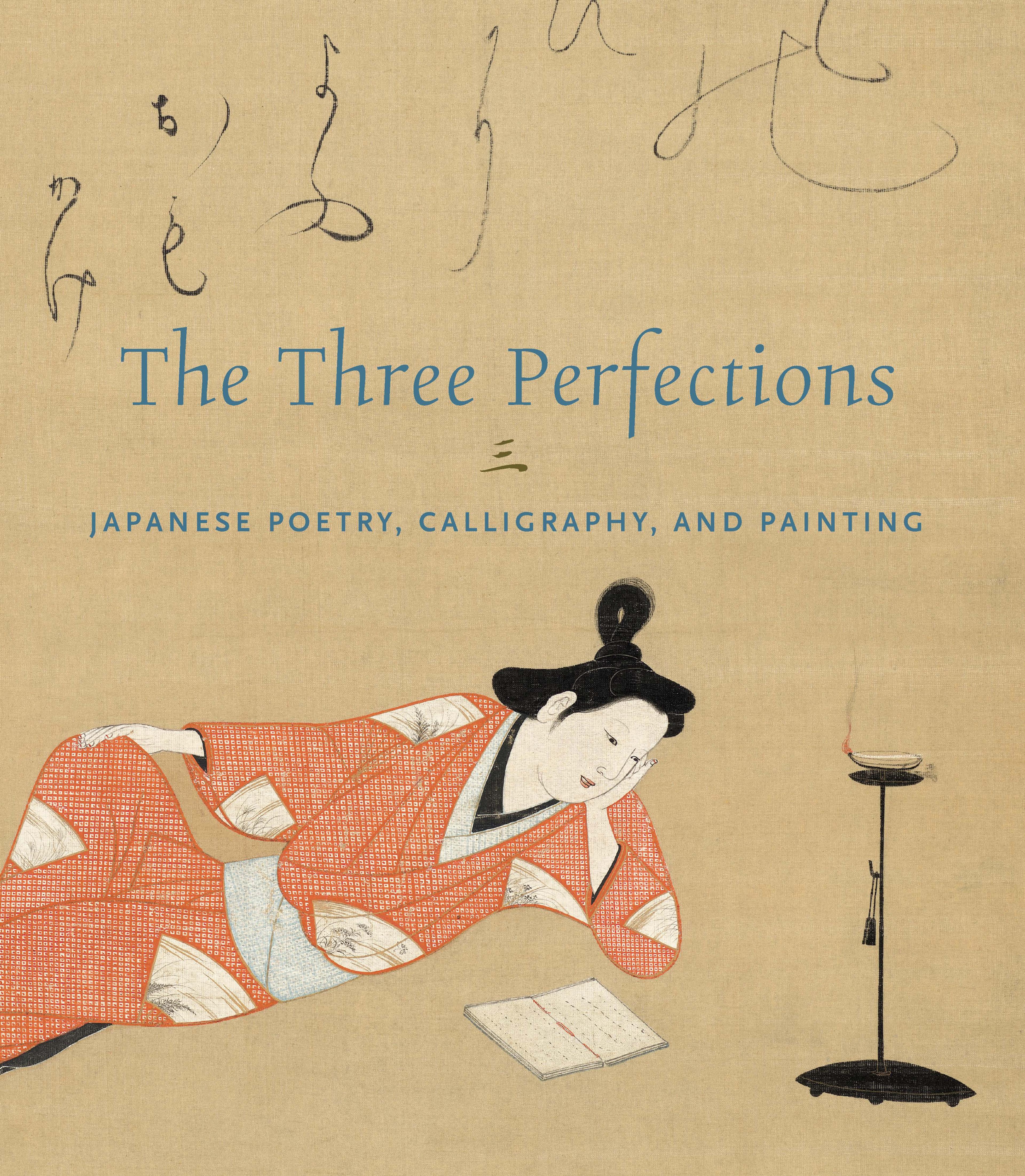Portrait of Sen no Rikyū with his Death Poem
Like many depictions showing Rikyū seated on a tatami mat, dressed in the robes of a Buddhist layman, wearing a cloth hat, and holding a closed fan, this anonymously executed example is based on a portrait attributed to the noted painter Hasegawa Tōhaku (1539–1610). That revered painting––treated almost as if it were a religious icon––is the treasured possession of the Omotesenke Fushin’an school of tea in Kyoto, established by a branch of Rikyū’s descendants. It bears an inscription dated 1595 by Sen’oku Sōen (1529–1611), a Zen master at Daitokuji and one of Rikyū’s spiritual advisers, establishing the precedent of Rikyū’s portraits being inscribed by prominent Zen or tea masters.
The inscription can be deciphered as follows, reading the columns of characters from left to right, reverse of normal order:
[Chinese verse]
人生七十
力圍希咄
吾這宝剣
祖佛共殺
[Waka poem]
提ル 我カ得具そくの 一太刀
今此時そ 天に抛
Jinsei shichijū
Riki-i-ki totsu
waga kono hōken
sobutsu tomo ni korosu
Hissaguru
waga egusoku no
hitotsu tachi
ima konotoki zo
ten ni nage-utsu
In a life of seventy years,
after exerting myself to the limit,
now, with my own sacred sword
I kill both patriarchs and the Buddha.
Carrying in my hands
the only weapon I own—
this one long sword—
and at this moment, alas,
I abandon it to the heavens.
--Trans. John T. Carpenter
The inscription can be deciphered as follows, reading the columns of characters from left to right, reverse of normal order:
[Chinese verse]
人生七十
力圍希咄
吾這宝剣
祖佛共殺
[Waka poem]
提ル 我カ得具そくの 一太刀
今此時そ 天に抛
Jinsei shichijū
Riki-i-ki totsu
waga kono hōken
sobutsu tomo ni korosu
Hissaguru
waga egusoku no
hitotsu tachi
ima konotoki zo
ten ni nage-utsu
In a life of seventy years,
after exerting myself to the limit,
now, with my own sacred sword
I kill both patriarchs and the Buddha.
Carrying in my hands
the only weapon I own—
this one long sword—
and at this moment, alas,
I abandon it to the heavens.
--Trans. John T. Carpenter
Artwork Details
- 如心斎宗左賛 千利休像に遺偈
- Title: Portrait of Sen no Rikyū with his Death Poem
- Artist: Painting by Unidentified artist
- Artist: Inscription by Joshinsai Sōsa (Japanese, 1705–1751)
- Period: Edo period (1615–1868)
- Date: early 17th century
- Culture: Japan
- Medium: Hanging scroll; ink and color on silk
- Dimensions: Image: 30 9/16 × 13 1/2 in. (77.7 × 34.3 cm)
Overall with mounting: 63 3/8 × 14 5/8 in. (161 × 37.1 cm)
Overall with knobs: 63 3/8 × 16 in. (161 × 40.6 cm) - Classification: Paintings
- Credit Line: Mary and Cheney Cowles Collection, Gift of Mary and Cheney Cowles, 2020
- Object Number: 2020.396.20
- Curatorial Department: Asian Art
More Artwork
Research Resources
The Met provides unparalleled resources for research and welcomes an international community of students and scholars. The Met's Open Access API is where creators and researchers can connect to the The Met collection. Open Access data and public domain images are available for unrestricted commercial and noncommercial use without permission or fee.
To request images under copyright and other restrictions, please use this Image Request form.
Feedback
We continue to research and examine historical and cultural context for objects in The Met collection. If you have comments or questions about this object record, please contact us using the form below. The Museum looks forward to receiving your comments.
